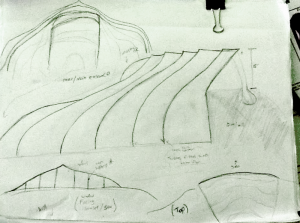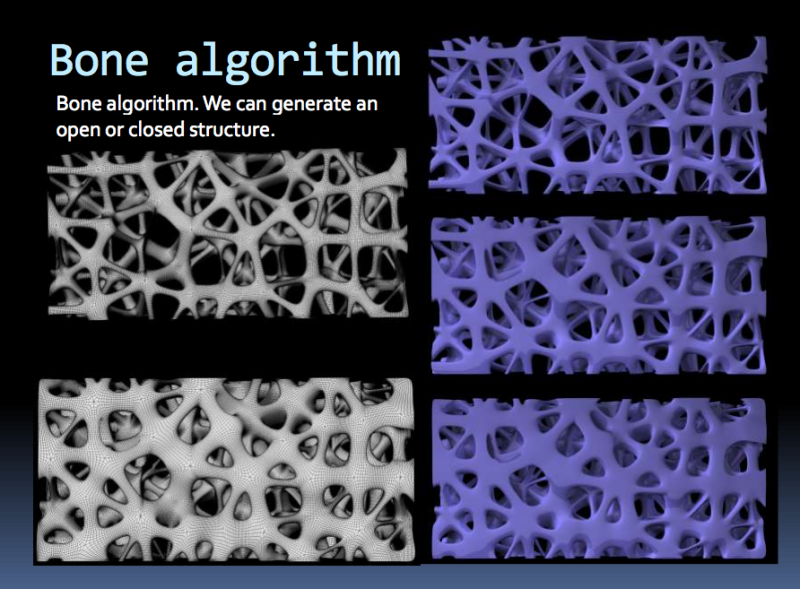 We have done a number of stories on how 3D printing can help fight climate change, and this is a very interesting application of the technology. Did you know that cement manufacturing is a climate change contributor that uses much energy and is emissions intensive because it’s produced using extreme heat? But 3D printing is positioned to help change all of that.
We have done a number of stories on how 3D printing can help fight climate change, and this is a very interesting application of the technology. Did you know that cement manufacturing is a climate change contributor that uses much energy and is emissions intensive because it’s produced using extreme heat? But 3D printing is positioned to help change all of that.
Right now, producing a ton of cement requires 4.7 million BTUs of energy, which is the equivalent of about 400 pounds of coal. More significant is that this process generates almost a ton of CO2. Given these facts, reducing cement manufacturing will also reduce greenhouse gas emissions.
Chad Knutsen leads a team that has proposed to the MIT Climate CoLab a project that will reduce worldwide CO2 emissions by 7-8% with the help of 3D printing. How? Knutsen is proposing a hempstone construction project as a replacement for cement. All “hempcrete”/”hempstone,” or hemp plastic or resin components, will be 3D printed in small manageable blocks in a skeletal form applying minimal material.
You can use stack these blocks together forming the body of the house, for example, and the blocks will include space for utilities and wiring in their design. An added benefit is that hemp can be grown and harvested worldwide, which can reverse damaging effects. (The US is the only advanced industrial nation that doesn’t allow industrial hemp farms.) After a few years, the hempcrete petrifies — evolving from plant into stone –which is pretty incredible when you think about the fact that this means more CO2 will be absorbed than released during construction and petrification processes.
Knutsen’s team wants to build a home with hempstone, which is made from micronized limestone, and specially milled refined and very strong hemp fibers. The plan is to use a proprietary technology that breaks down materials and teases them apart along natural structural boundaries. (This utilizes resonant frequency and negative air pressure instead of heat and friction.) The hempstone will be poured into lightweight and easily shipped hemp resin or plastic 3D printed frames to create the house, which will also have other ecological features as well. The team proposes to outfit the house (rough sketch of house seen below) with other new non-commercialized environmental technologies, so they can give inventors a chance to showcase their innovations as part of the future hempstone house.
There’s also a series of other benefits to the idea of construction with low CO2 emission hempstone instead of cement: current building methods are not durable compared to hempstone. David Mosrie of Push Design was involved in building the US’ first hempstone home. He explained that it’s so attractive because it can stand the test of time:
compared to hempstone. David Mosrie of Push Design was involved in building the US’ first hempstone home. He explained that it’s so attractive because it can stand the test of time:
“The durability is unlike anything we have seen, with the exception of stone, as perhaps even beyond that as there is no mortar joint failure possible. Studies in Europe have estimated about a 600-800 year life span for the wall system.”
Hempstone can be used to fix critical deteriorating infrastructure inexpensively and is long lasting. This makes sense when you consider that intact ancient Roman aqueducts and roads were built utilizing hempstone mortar.
The idea that 3D printed hempstone may be the wave of the green future for construction is exciting, and it’s a good idea to keep your eyes on this project as it is refined and hopefully realized. Is this a future plan you’d support? Join the discussion in the 3D Printed Hempstone forum thread over at 3DPB.com.
Subscribe to Our Email Newsletter
Stay up-to-date on all the latest news from the 3D printing industry and receive information and offers from third party vendors.
Print Services
Upload your 3D Models and get them printed quickly and efficiently.
You May Also Like
Reinventing Reindustrialization: Why NAVWAR Project Manager Spencer Koroly Invented a Made-in-America 3D Printer
It has become virtually impossible to regularly follow additive manufacturing (AM) industry news and not stumble across the term “defense industrial base” (DIB), a concept encompassing all the many diverse...
Inside The Barnes Global Advisors’ Vision for a Stronger AM Ecosystem
As additive manufacturing (AM) continues to revolutionize the industrial landscape, Pittsburgh-based consultancy The Barnes Global Advisors (TBGA) is helping shape what that future looks like. As the largest independent AM...
Ruggedized: How USMC Innovation Officer Matt Pine Navigates 3D Printing in the Military
Disclaimer: Matt Pine’s views are not the views of the Department of Defense nor the U.S. Marine Corps Throughout this decade thus far, the military’s adoption of additive manufacturing (AM)...
U.S. Congress Calls Out 3D Printing in Proposal for Commercial Reserve Manufacturing Network
Last week, the U.S. House of Representatives’ Appropriations Committee moved the FY 2026 defense bill forward to the House floor. Included in the legislation is a $131 million proposal for...


































